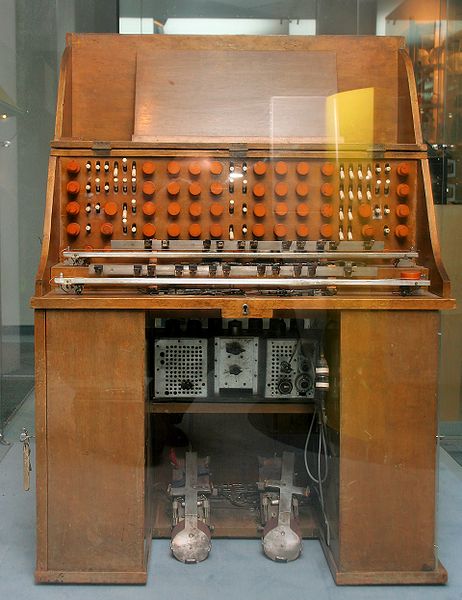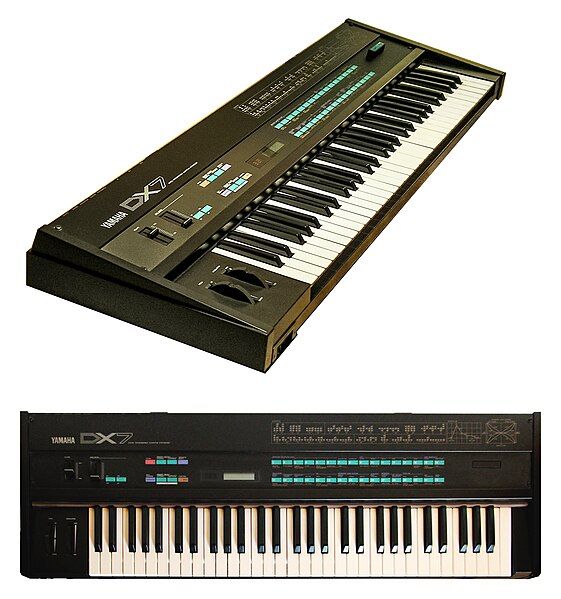The Trautonium is an electronic synthesizer invented in 1930 by Friedrich Trautwein in Berlin at the Musikhochschule's music and radio lab, the Rundfunkversuchstelle. Soon afterwards Oskar Sala joined him, continuing development until Sala's death in 2002.
Telefunken Volkstrautonium, 1933 (Telefunken Trautonium Ela T 42 (1933–35)) a production version of the Trautonium co-developed by Telefunken, Friedrich Trautwein and Oskar Sala from 1931 onwards.
Mixtur-Trautonium, 1952
Mixtur-Trautonium, 1955.
Max Brand Synthesizer (1968), aka Moogtonium, is Austrian composer Max Brand's own version of Mixture Trautonium built by Robert Moog during 1966–68.
A synthesizer is an electronic musical instrument that generates audio signals. Synthesizers typically create sounds by generating waveforms through methods including subtractive synthesis, additive synthesis and frequency modulation synthesis. These sounds may be altered by components such as filters, which cut or boost frequencies; envelopes, which control articulation, or how notes begin and end; and low-frequency oscillators, which modulate parameters such as pitch, volume, or filter characteristics affecting timbre. Synthesizers are typically played with keyboards or controlled by sequencers, software or other instruments and may be synchronized to other equipment via MIDI.
Early Minimoog by R.A. Moog Inc. (c. 1970)
Robert Moog with Moog synthesizers. Many of Moog's inventions, such as voltage-controlled oscillators, became standard in synthesizers.
The Minimoog, introduced in 1970, was the first synthesizer sold in music stores.
The Yamaha DX7, released in 1983, was the first commercially successful digital synthesizer and was widely used in 1980s pop music.








